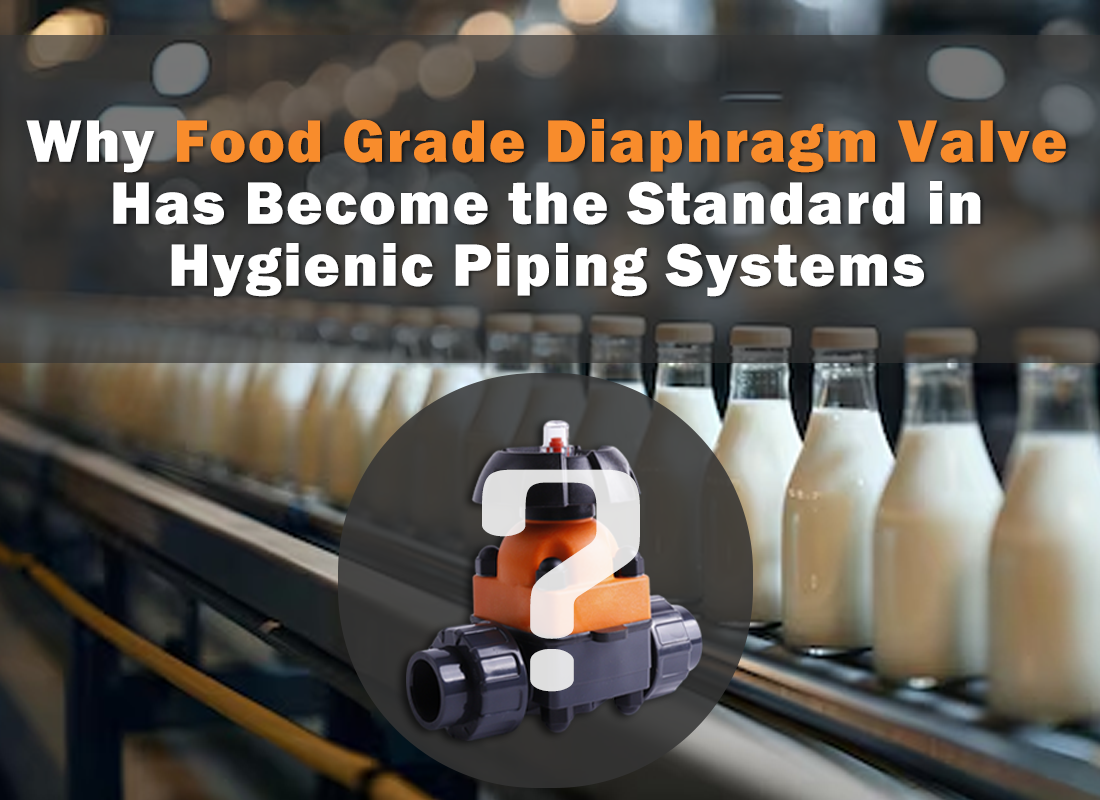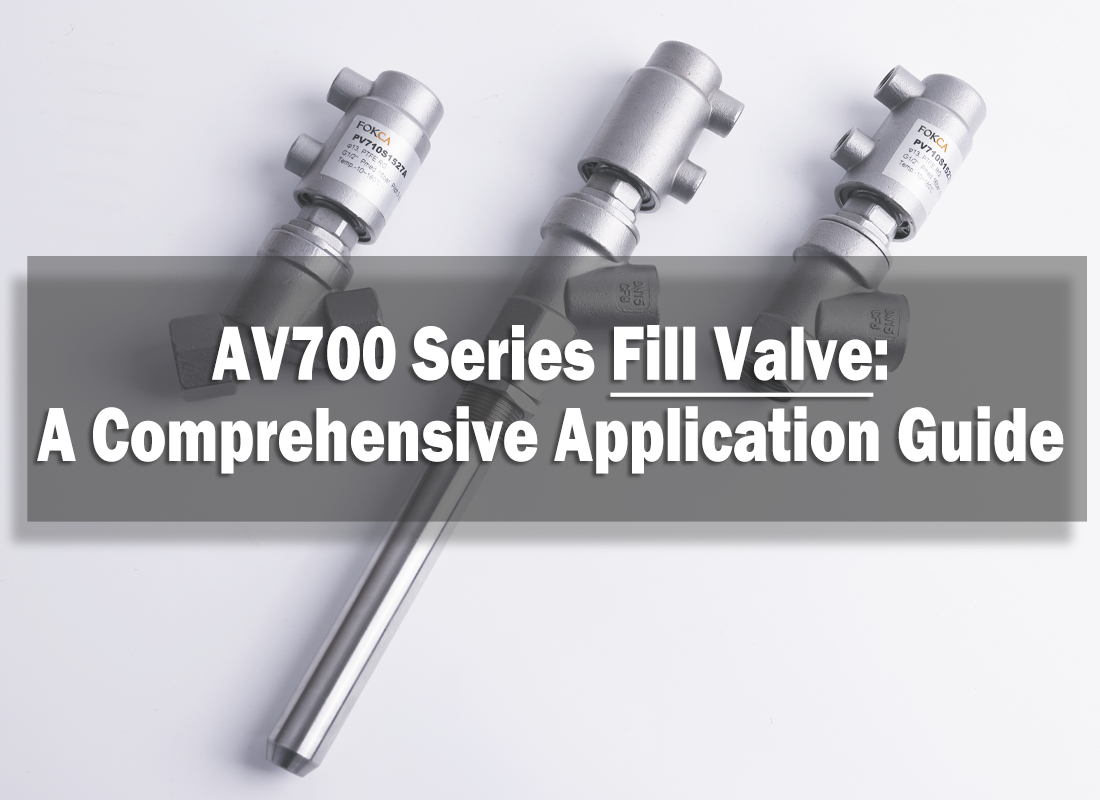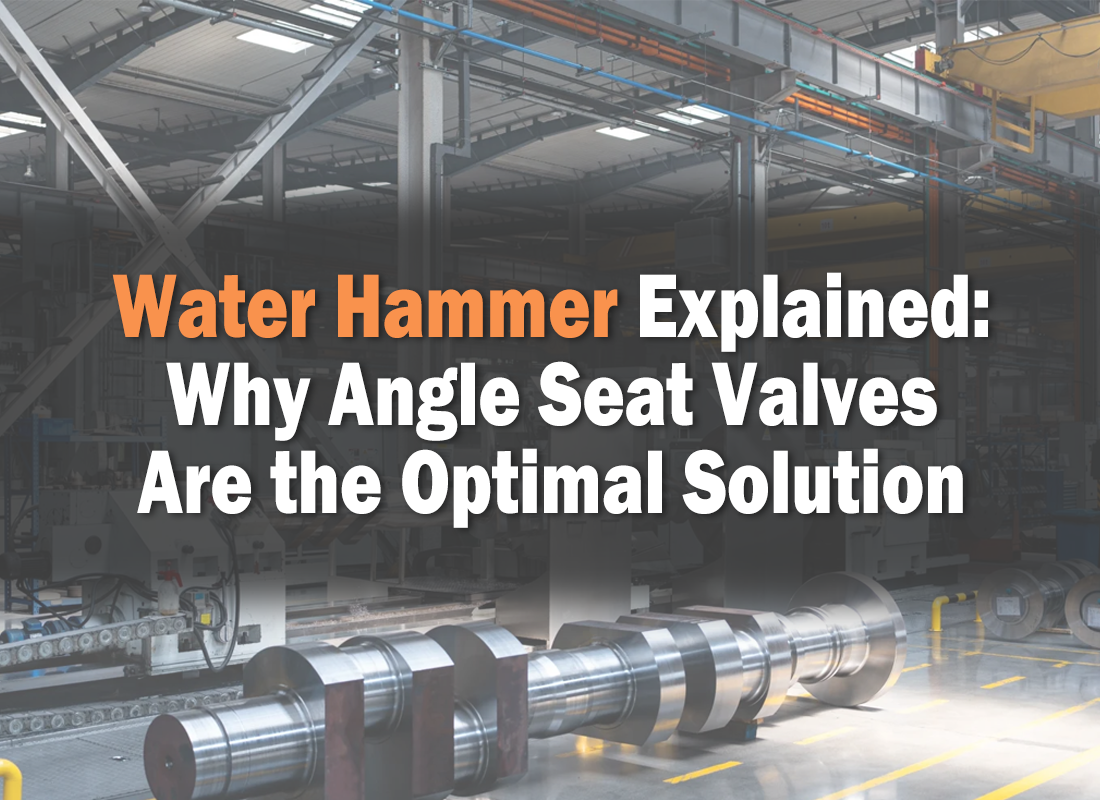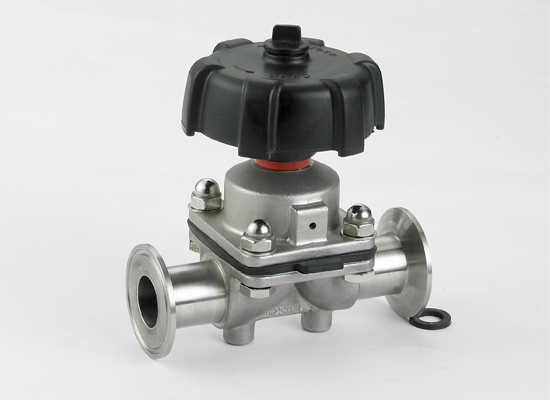What is diaphragm valve?
The diaphragm valve is primarily a mechanical on/off valve. Its diaphragm design combined with various actuation methods makes it widely applicable in modern automated industrial systems.
Advantages and disadvantages of diaphragm valve
The main features of diaphragm control valves lie in their diaphragm structure and function, which embody their unique advantages.
Good Sealing Performance – No Leakage
The sealing of a diaphragm valve is achieved by the flexible diaphragm being pressed directly against the valve body’s sealing surface. The elastomer diaphragm completely isolates the valve stem and actuator from the medium inside the valve body, preventing the medium from escaping.
Corrosion Resistance and Anti-Clogging
The diaphragm has a very smooth structural design and is made of corrosion-resistant, chemically resistant materials. The flexible diaphragm completely isolates the actuator from the medium, making it suitable for media containing solid particles, slurries, or high-viscosity fluids. This gives diaphragm valves excellent corrosion resistance and anti-clogging performance.
Hygienic Design
The hygienic design of diaphragm valves mainly comes from their structure, material selection, and ease of cleaning. The internal structure is smooth and free of sharp corners, reducing the chance of medium residue. The elastomer diaphragm separates the valve stem and actuator from the medium, preventing contamination. In addition, hygienic diaphragm valves can be sterilized at high temperatures and cleaned chemically. The materials used are safe and meet sanitary standards, making them suitable for the food and hygiene industries.
Low Maintenance
The low maintenance requirements of diaphragm valves are mainly due to their elastomer diaphragms. Unlike other valves that rely on metal-to-metal sealing between the plug and seat, diaphragm valves achieve a tight seal through the flexible diaphragm closely fitting the valve seat. The diaphragm also prevents the valve stem from coming into contact with the medium, avoiding corrosion. Furthermore, the diaphragm material is resistant to chemicals and corrosion, reducing replacement frequency. When maintenance is needed, replacing the diaphragm is quick and straightforward.
Disadvantages
Limited Operating Temperature and Pressure: Diaphragms are often made of rubber, PTFE, or other flexible materials, which have a limited service life under high temperature and high pressure.
Limited Size Range: Generally suitable for DN ≤ 300 mm. Larger sizes increase cost and make the valve bulky.
High Flow Resistance and Low Control Accuracy: The flow path is not straight and often features a raised weir design. The medium must flow around the diaphragm seat, creating bends that increase resistance. Flow regulation accuracy is also relatively low.
Application Recommendations Based on Characteristics
Excellent corrosion resistance and sealing performance make diaphragm valves suitable for chemical industries.
Food-grade safety and cleanability make them ideal for pharmaceutical and food industries.
Low maintenance requirements make them suitable for water treatment applications dealing with sludge and impurities.
Differences Compared to Ordinary Valves
Ball Valve vs diaphragm valve
Compared to diaphragm valves, ball valves have faster opening and closing speed and extremely low flow resistance, minimizing resistance and energy loss in the fluid, making them energy-efficient and environmentally friendly. However, ball valves are not suitable for media containing particles or slurry, and their sanitary performance is inferior to diaphragm valves. In addition, corrosion-resistant materials need to be customized to improve their corrosion tolerance.
Gate Valve vs diaphragm valve
Gate valves also have slow opening and closing speed but very low flow resistance, making them suitable for large-flow media transportation. They can withstand high temperature and high pressure, and large diameters can be manufactured at relatively low cost. Their disadvantages are similar to ball valves: they are not suitable for media containing particles or slurry, and the valve stem is in direct contact with the medium, increasing corrosion risk and reducing service life.
Butterfly Valve vs diaphragm valve
Butterfly valves also feature relatively low flow resistance, with a nearly straight flow path, making them suitable for long pipelines and large-diameter applications. Large-diameter butterfly valves are also lightweight and low-cost. However, their sealing performance is relatively poor, they are not suitable for media with large amounts of solid particles or slurry, and their sanitary performance is generally limited.
Globe Valve vs diaphragm valve
Globe valves offer higher flow control precision than diaphragm valves and are suitable for high-temperature, high-pressure, and steam applications. However, they share the same disadvantage as diaphragm valves: high flow resistance. Additionally, globe valves are not suitable for media containing solid particles, their sanitary and corrosion resistance is poor, and replacement and maintenance costs are usually relatively high.
Conclusion
Different valve types have different characteristics and applications. We need to make the right choice based on the valve's appropriate characteristics and materials to maximize system efficiency.You can also browse our website for more information on valves, as we offer a wide variety of valve types.





















